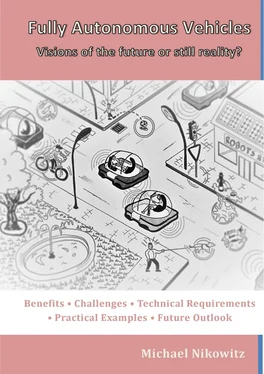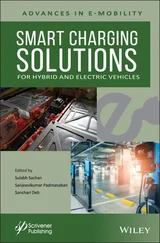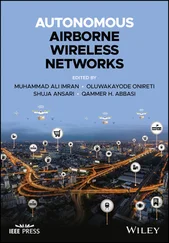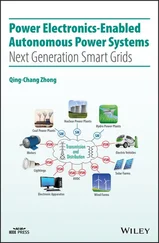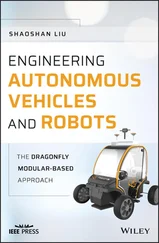1.1 Definition of (fully) autonomous vehicles. 8 1.1 Definition of (fully) autonomous vehicles Right now, there exists no consensus definition of autonomous vehicles. The most typical designations are: “driverless”, “(fully) autonomous”, “self-driving” or “robotic”. Currently, the descriptions “driverless” or “fully autonomous” vehicles are representing the most common phrases by containing: a vehicle (car) with total autonomy. As there is no consensus definition, two working definitions will be used here: • Definition 1 : a vehicle that is designed to travel between destinations without a human operator. • Definition 2 : a vehicle which is able to perceive its environment, decide autonomously which route to take to its destination, and conduct itself along the route it selects. Certain milestones of autonomy must be achieved before a vehicle can be considered fully autonomous (a detailed description is mentioned in chapter 5). A fully autonomous vehicle can be described as a vehicle, being able to navigate without any human intervention to a predetermined destination over roads that have not been adapted for its use. For a common understanding, the terms “autonomous” and “driverless” vehicles will be used interchangeably in this report.
1.2 What does a “driverless” vehicle look like?. 9
1.3 Why are autonomous vehicles important now?. 15
2 Benefits and societal impacts of autonomous driving. 22
2.1 The promises of autonomous driving. 22
2.2 The impacts of autonomous driving. 30
3 Barriers and challenges of autonomous driving. 36
3.1 The loss of joy. 36
3.2 Increases in unemployment 37
3.3 Data protection and privacy. 37
3.4 Costs of autonomous vehicles. 38
3.5 Market introduction and transit period. 40
3.6 Legislation and liability. 41
3.7 The 2x2 dimension of autonomous driving. 47
4 A cost/ benefit analysis of autonomous driving. 50
5 From ADAS to fully autonomous driving. 51
5.1 ADAS-Systems - an overview.. 54
5.2 Accident avoidance through ADAS. 55
5.3 ADAS - a fast growing industry. 57
5.4 The different steps towards self-driving vehicles. 63
6 Technical requirements for autonomous driving. 69
7 Examples of autonomous vehicles. 87
7.1 Google’s self-driving cars - first generation. 89
7.2 Google’s next generation of self-driving cars. 93
8 Availability of autonomous vehicles and future outlook. 98
8.1 Current status. 98
8.2 When to expect (fully) autonomous driving?. 102
9 The future of the driverless-automotive industry. 110
10 Conclusion. 119
11 Appendix. 122
11.1 List of References. 122
11.2 List of Figures. 131
11.3 Abbreviations and Nomenclature. 134
Visions of unmanned and autonomous machines and vehicles are not new. Experiments with unmanned aircrafts began in the First World War and a radio controlled car was demonstrated in the streets of New York in 1925 [2].
Autonomous vehicles have long been predicted in science fiction and discussed in popular science media.
Recently, major corporations have announced plans to begin selling fully autonomous vehicles in the near future.
Driverless vehicles are no longer restricted to the realm of science fiction - they are in development and will be operating on our roads sooner than many would imagine.
This section defines the terms “autonomous”, “self-driving”, and “robotic” as they refer to vehicles and provides examples of each. Further, this section points out why these vehicles are so popular nowadays and why they might become indispensable for our society.
1.1 Definition of (fully) autonomous vehicles
Right now, there exists no consensus definitionof autonomous vehicles. The most typical designations are: “driverless”, “(fully) autonomous”, “self-driving” or “robotic”. Currently, the descriptions “driverless” or “fully autonomous” vehicles are representing the most common phrases by containing:a vehicle (car) with total autonomy.
As there is no consensus definition, two working definitions will be used here:
• Definition 1 : a vehiclethat is designed to travelbetween destinations without a human operator.
• Definition 2 : a vehiclewhich is able to perceive its environment, decide autonomously which route to taketo its destination, and conduct itself along the route it selects.
Certain milestones of autonomy must be achieved before a vehicle can be considered fully autonomous (a detailed description is mentioned in chapter 5).
| A fully autonomous vehicle can be described as a vehicle, being able to navigate without any human intervention to a predetermined destination over roads that have not been adapted for its use. |
For a common understanding, the terms “autonomous” and “driverless” vehicles will be used interchangeably in this report.
1.2 What does a “driverless” vehicle look like?
The concept of a driverless vehicle is not totally new.
Even in the year 1957people thought about what future cars would look like. Fig 1 shows a common portrayal. Here we see a family of four playing a board game while their futuristic electric car drives itself. As this advert from 1957 suggests, the aspiration for self-driving cars is one that has been held for at least half of a century. The text that accompanied the original read: “ELECTRICITY MAY BE THE DRIVER. One day your car may speed along an electric super-highway, its speed and steering automatically controlled by electronic devices embedded in the road. Highways will be made safe by electricity! No traffic jams…no collisions…no driver fatigue.”
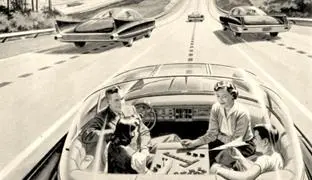
Fig 1: Imagination of a self-driving car from 1957 [3]
However, when todaypeople are asked what they imagine driverless vehicles to be like, their responses may differ depending on their generation and their knowledge of current driverless car engineering. The younger and elderly generation imagine “robotic vehicles” when they think about driverless vehicles. As this description consists of the two terms “robotic” and “vehicle”, many adult (and especially elderly) people envision a robot driving a conventional car. An illustration is shown in Fig 2. This figure shows a robot trying to drive a vehicle during the Defense Advanced Research Projects Agency’s (DARPA’s) Robotic Challenge.
This challenge is a competition between teams of robot and software engineers who are trying to develop robots capable of assisting humans in responding to natural and man-made disasters. It was designed to be extremely difficult. Participating teams, representing some of the most advanced robotics research and development organizations in the world, collaborate and innovate on a very short timeline to develop the hardware, software, sensors, and human-machine control interfaces that will enable their robots to complete a series of challenge tasks selected by DARPA for their relevance to disaster response [4].
While the elderly generation imagines a robot (more or less a humanoid one) driving a conventional car, the younger generation thinks about a robot that can transform itself into a conventional car. This conceptualization might be primarily informed by popular movies like “The Transformers”, as it can be seen in Fig 3. At least from today’s point of view, we are far away from such a technology and it might be questionable if we will ever develop such a technology.
Читать дальше
